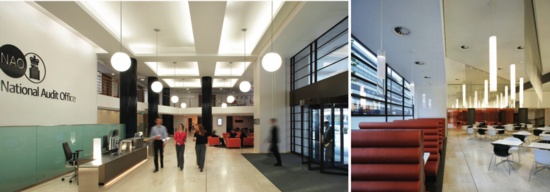Refurbishment is the key to carbon-reduction targets

Bringing our existing building stock up to speed in terms of its energy efficiency will be vital if the UK is to meet its greenhouse gas emissions targets. Ant Wilson explains how the Building Regulations 2010 reinforce this view.
Now that the Coalition Government has confirmed that it will support the carbon targets introduced by the previous Government — namely an 80% reduction in greenhouse-gas emissions by 2050 (compared to the 1990 baseline) — there needs to be more emphasis on refurbishing existing building stock. In fact, we need to go even further than we have in the past, because we are continually adding to the total stock and need to ensure this does not exacerbate the problem.
To ensure that we do actually refurbish buildings to reduce their greenhouse-gas emissions, the 2010 Building Regulations reinforce earlier versions in promoting the need for energy efficiency in refurbishment projects as well as new build. In the case of refurbishments, the triggers for ‘consequential improvements’ include refurbishment work on buildings with a useful floor area of more than 1000 m2 and work to building services plant and/or thermal elements.
Clearly, the building-services industry has an important role to play in achieving these objectives, and services are highly represented in Table 6, in section 6 of Approved Document L2B 2010 (refurbishment of non-dwellings). However, it is important not to forget the building fabric and to exploit opportunities to improve the fabric and reduce the demand for heating and cooling. Of course, this is more difficult to achieve with existing buildings, and the requirements for fabric improvements are more onerous for existing buildings than new buildings in the latest regulations. This difference reflects the fact that refurbishment deals with the building in a piecemeal fashion.
The Approved Documents and the Compliance Guides now play a more important role in ensuring that any refurbishment work or plant replacement is carried out to the required standards. To that end, the regulatory aspect of Part L 2010 simply requires ‘reasonable’ provision to be made for the conservation of fuel and power, and also requires that fixed building services are energy efficient with effective controls. It is the Approved Documents and Compliance Guides that provide the detail on what constitutes ‘reasonable’ and ‘efficient’. It is also worth noting that these are guides to achieving compliance; other solutions may prove acceptable to Building Control in specific projects.
There are Compliance Guides for both dwellings and non-dwellings though, as with the Approved Documents, there is more cross-referencing between them in the latest versions. So it is important to follow the cross–references to other documents to view the full picture. Part L 2010 also includes cross-references to the extended fuel CO2 emissions factors in SAP 2009 (March 2010). This is an important consideration because emissions vary with fuel type so, for instance, a highly efficient oil-fired boiler may have higher emissions than a less efficient gas-fired boiler.
Approved Document L2B 2010 also highlights the key areas to address in building-services refurbishment, with emphasis on heating, cooling and air-handling systems that are more than 15 years old, and lighting systems that have an average lamp efficacy of less than 40 lamp lumens per circuit watt serving areas greater than 100 m2. There are also references to thermal elements and low- or zero-carbon (LZC) technologies. In addition, any recommendations accompanying Energy Performance Certificates will provide a useful guide to areas where efforts may be focused.
In most cases, the regulations deem a payback period of less than 15 years to be acceptable, unless the building has less than 15 years of useful life left. If the latter, a payback corresponding to the remaining life of the building will be considered acceptable.

Once the scope of the work has been defined it is important to consider every aspect of each system.
For example, there is very little point in installing a new, efficient boiler or chiller if they are going to serve unlagged pipes and waste a lot of the energy. Similarly, fans and pumps (the ‘movers’) make a significant contribution to overall system energy consumption, so introducing variable-speed control can be very helpful in improving efficiency. There may also be scope for using newer technologies, such as LED light sources, to reduce energy consumption.
Beyond the installation and replacement work, effective control of the services is critical, and this has been continually reinforced in Building Regulations over the years. Similarly, commissioning is vital to ensure the systems work as designed, and the need for commissioning is further reinforced in Part L 2010. This issue was dealt with in more detail by Hywel Davies in MBS January 2011, p.31 (you can also find the article on our web site; put ‘Hywel Davies’ into the search box).
Of course, once the system has been properly commissioned it needs to continue to operate at maximum efficiency in occupancy. This is why the Building Regulations continue to emphasise the need for comprehensive building log books and operation and maintenance manuals.
Compliance with Part L continues to be the mainstay of improving the energy performance of our building stock, and building-services engineers continue to be at the forefront of delivering practical solutions. Ensuring you are up to speed with the latest regulations is the first stage in achieving the best solutions.
Ant Wilson is director of building engineering with AECOM.







